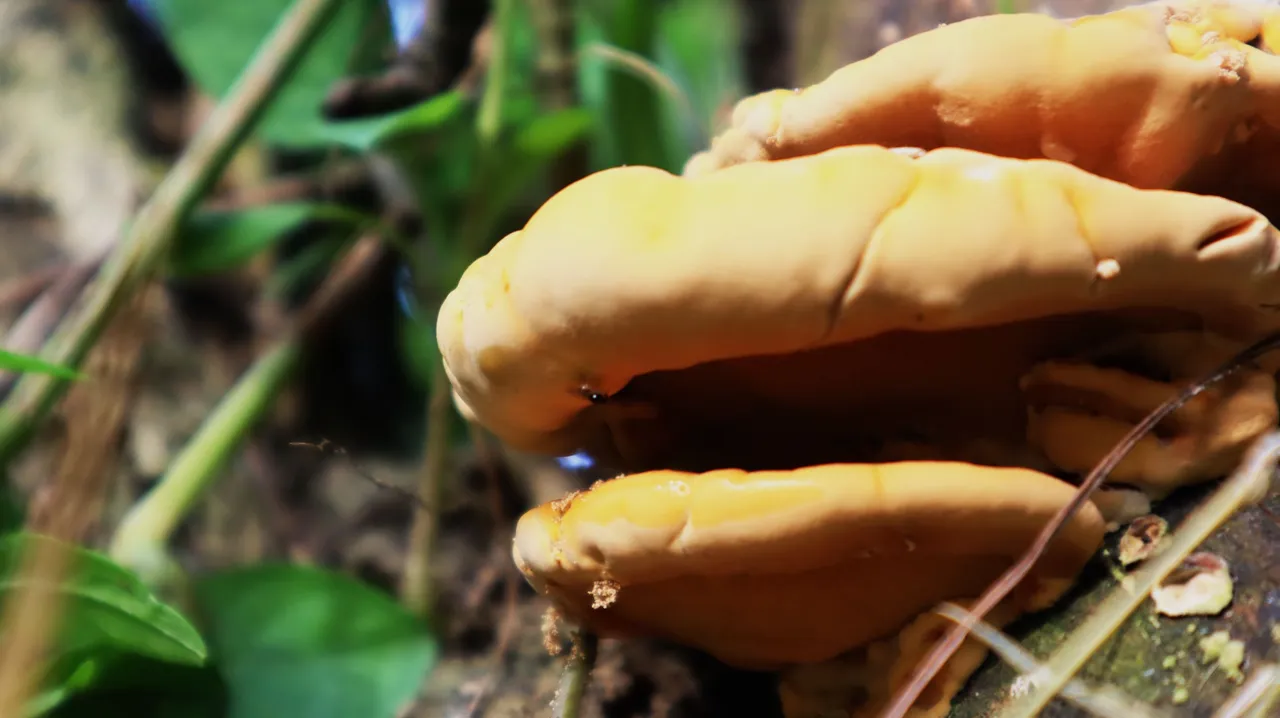
Delicious cheese is not something that is common in our place, but somehow, when I found these mushrooms, my mind immediately imagined it. Unfortunately, it's not cheese, nor butter, not even edible mushrooms (as will be explained later).
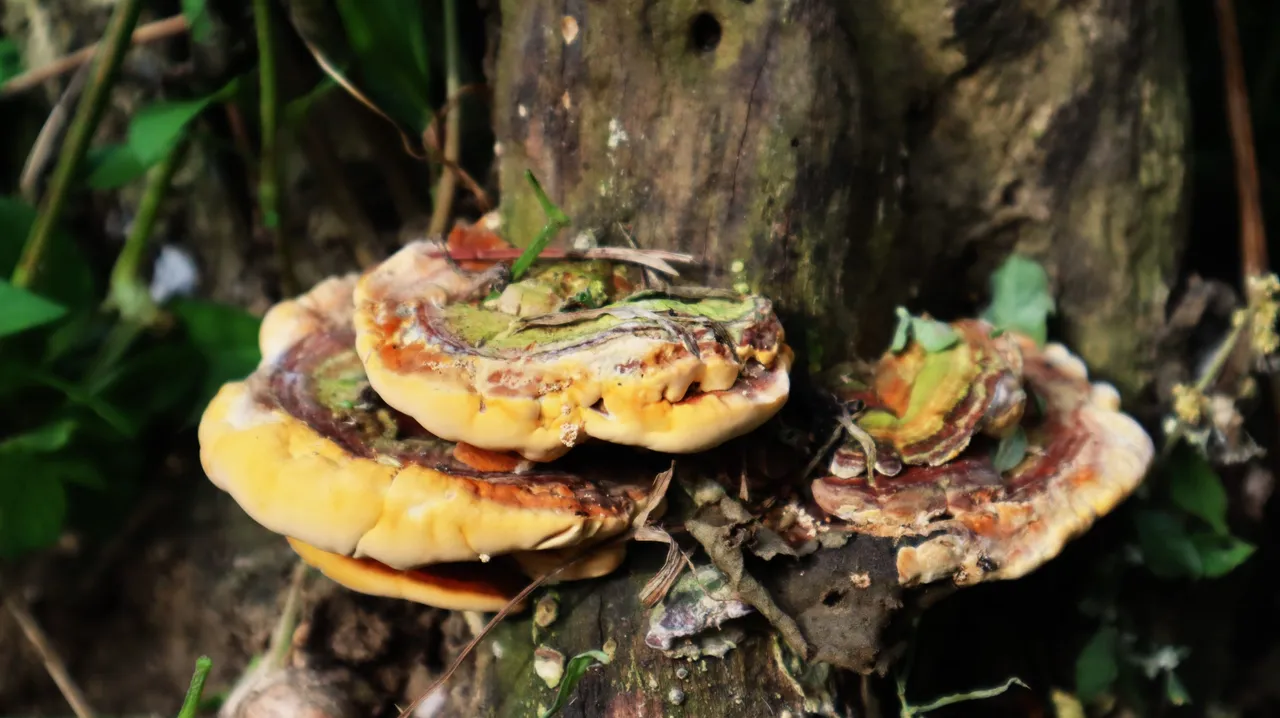
Before identifying these mushrooms that I found, I will try to describe what I can observe about them.
It grew on the stump of a dead tree, as well as on the higher part of the fallen tree (the tree looks long dead, but I think it's still pretty hard). They grew overlapping like stacked shelves. The fruiting body is generally wide in a semicircle. No stems visible. The surface of the cap, in general, is brownish red in color but varies in coloration to yellow or cream at the edges. Underneath, as seen, no gills.
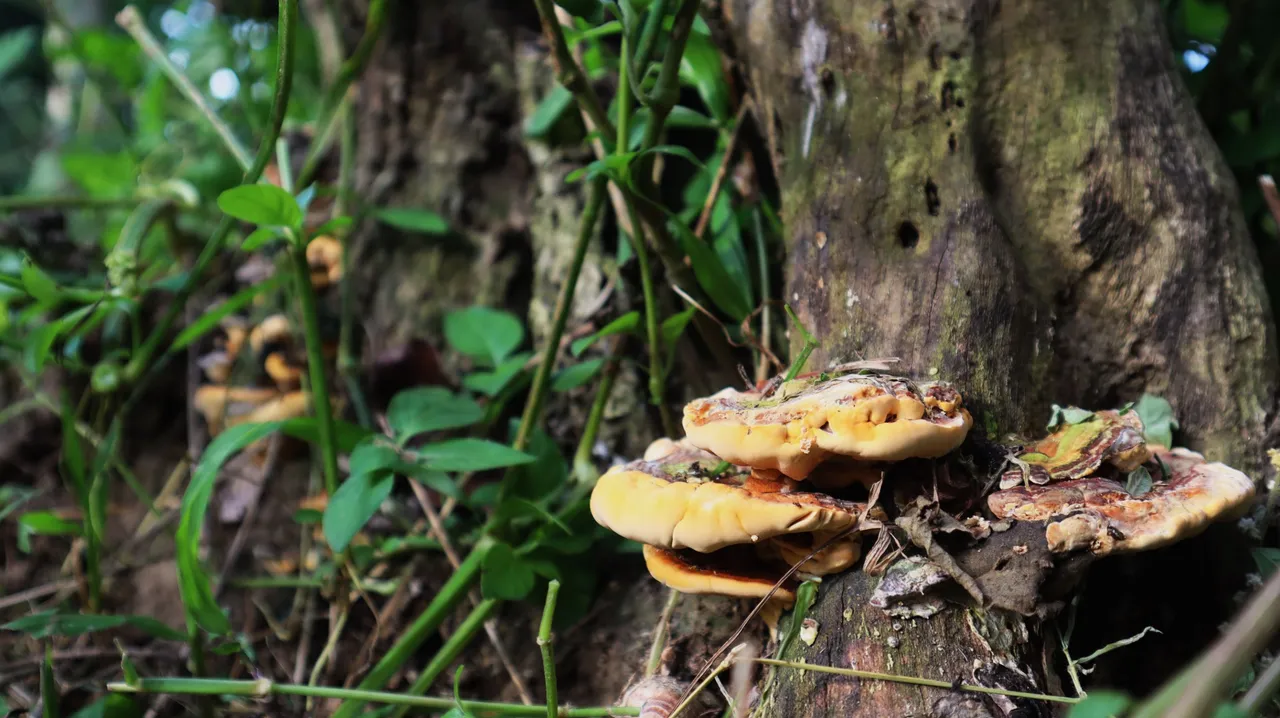

With the help of Mushroom Expert and Wikipedia that I refer to, I was able to recognize that this is a fungus of the Genus Ganoderma. Wikipedia even mentions: "many from tropical regions." That means including where I am, in Aceh, Sumatra.
"Cap surface with a shellacked, lacquered-looking appearance, with colors ranging from red to orange, yellow, and brown," said the Expert. I also found this in my mushrooms. So, I'm sure this is a species of Ganoderma, but what species is it actually?
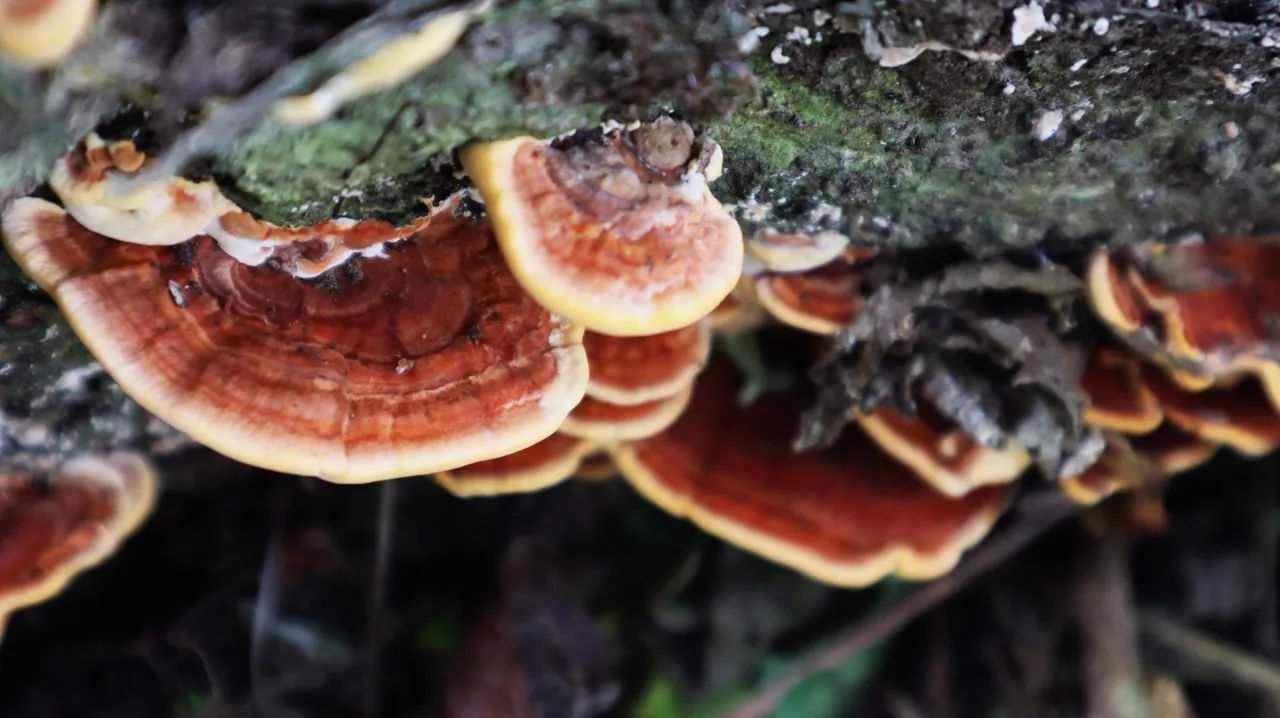
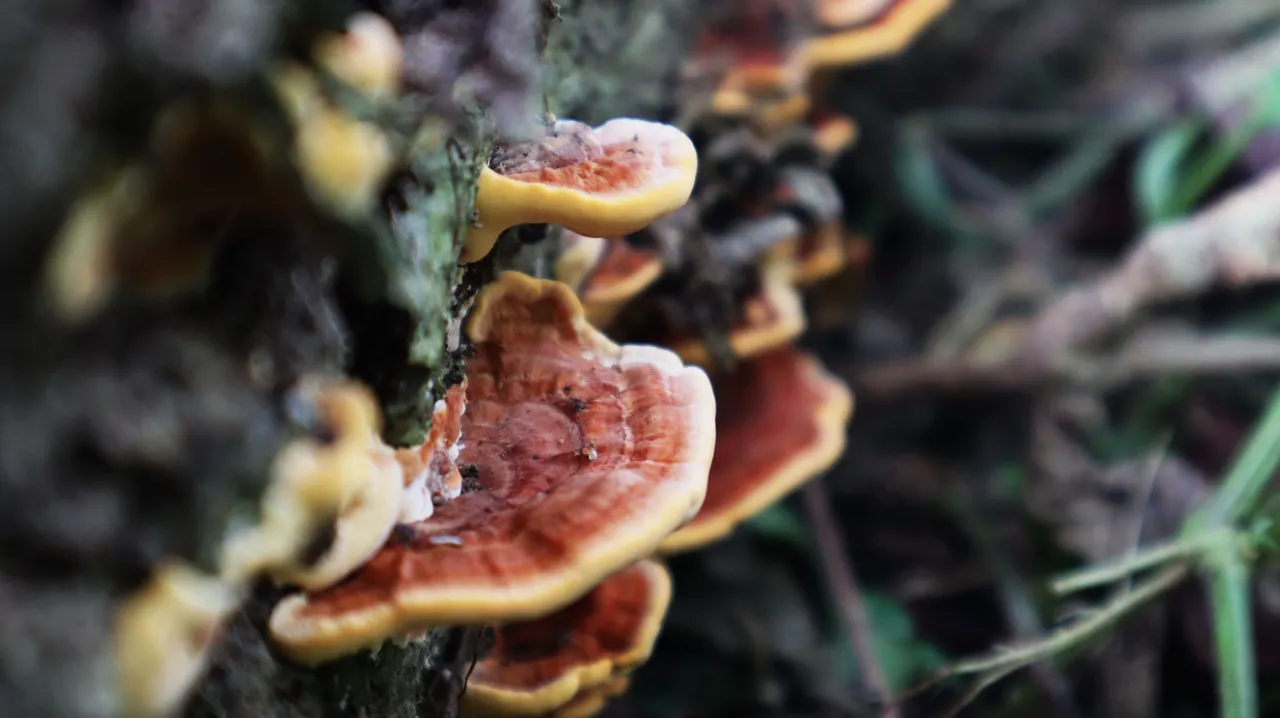
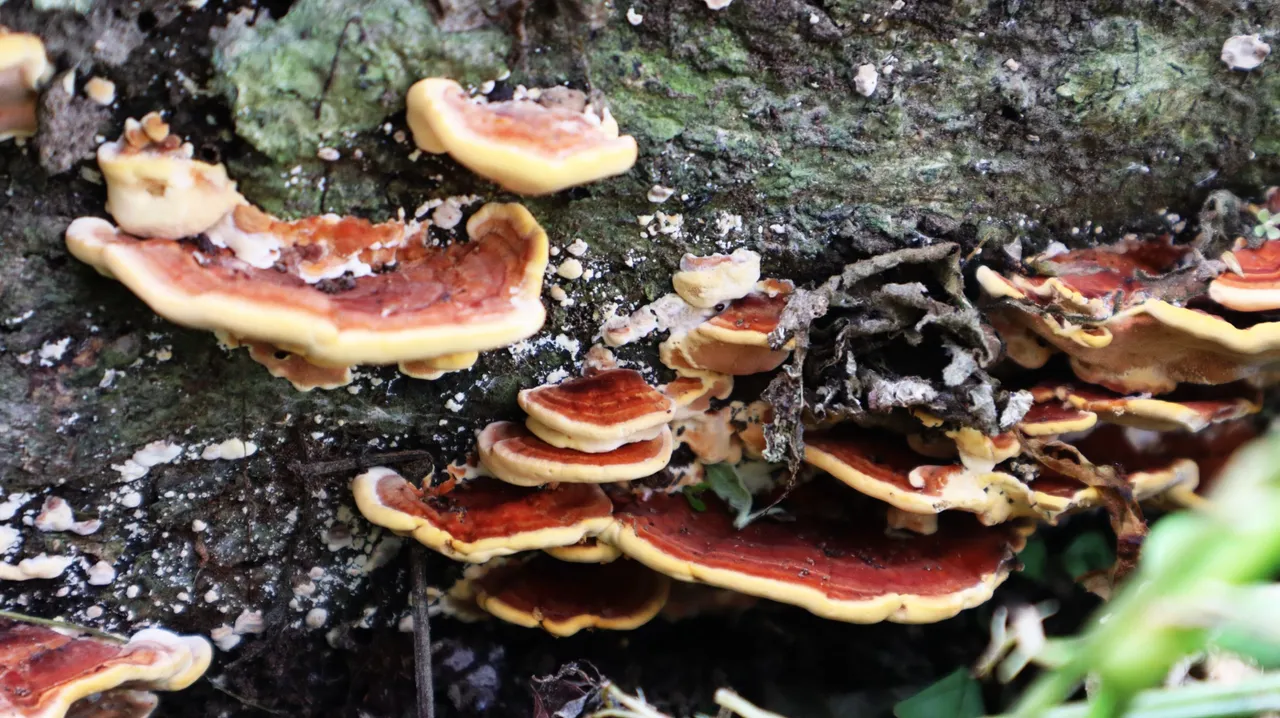
After reading some references in identifying the mushrooms, I found that Reishi is a well-known mushroom species as it is said to have been used in traditional medicine in the far east since ancient times. Reishi is known by the scientific name Ganoderma lucidum with limited distribution in Europe and parts of China, growing on rotting hardwood. But Ganoderma lucidum was later split so that the scientific name was only for the species found in Europe, while in China, it was Ganoderma lingzhi (Reishi). While the related fungi found in North America are two different species, one is Ganoderma curtisii and the other is Ganoderma sessile. Well, what caught my attention here is the characteristic of Ganoderma sessile which is said to have no stem, no melanoid bands but has concentric growth zones, and these are all things that distinguish it from Ganoderma curtisii.
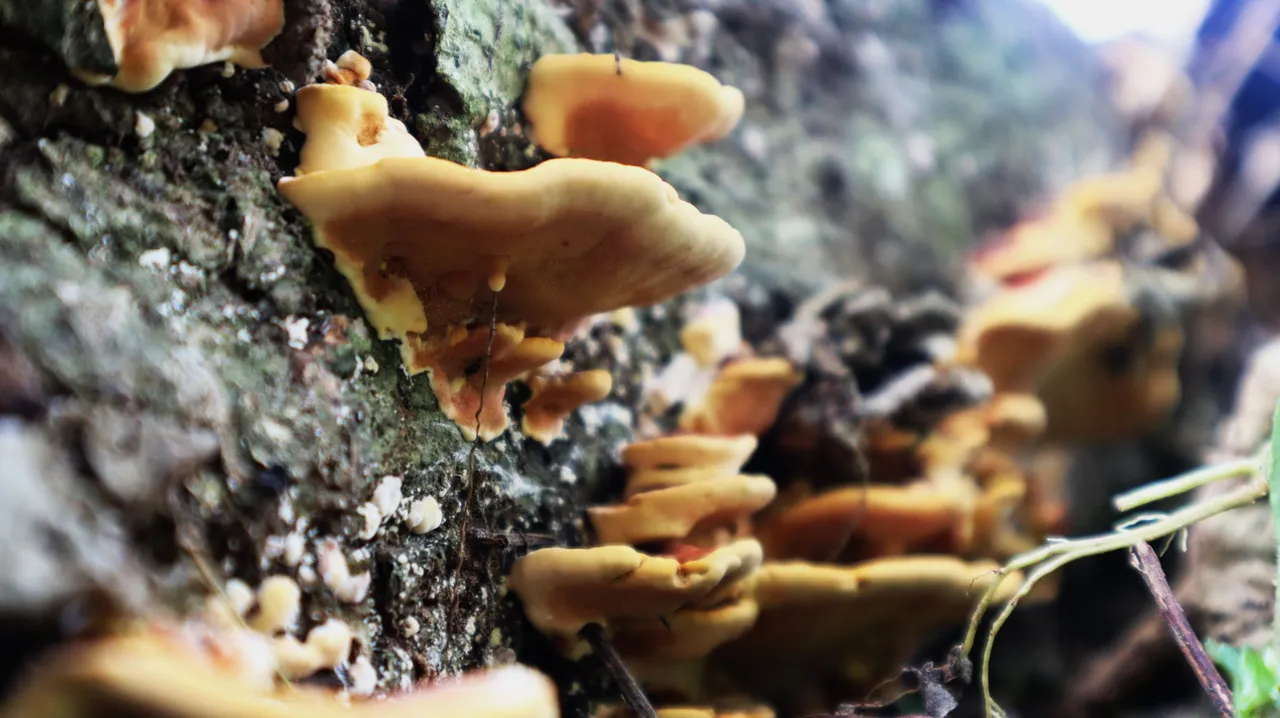
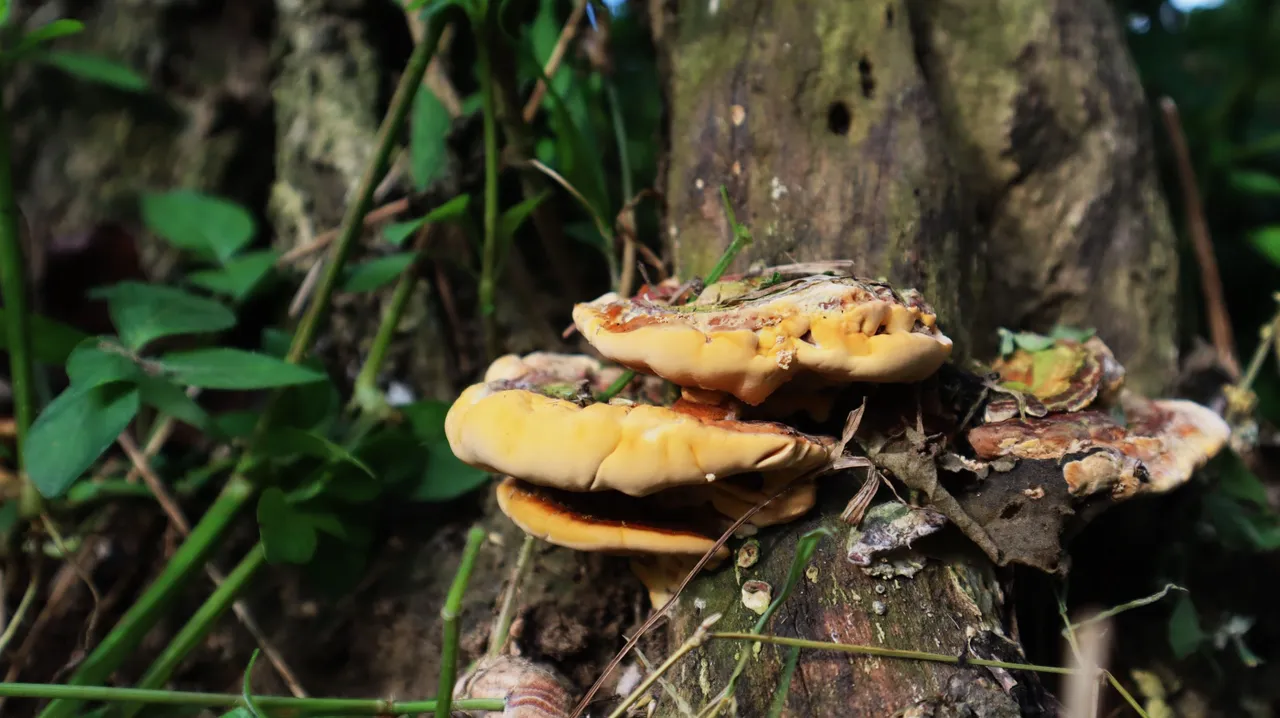
Well, what caught my attention here is the characteristic of Ganoderma sessile which is said to have no stem, no melanoid bands but has concentric growth zones, and these are all things that distinguish it from Ganoderma curtisii. And all of this, coupled with the various characteristics I mentioned earlier for my mushrooms, I think, those I found were the inedible Ganoderma sessile, and also not necessarily one of the Reishi mushrooms that are said to be used for medicinal uses.
(Readings: The Genus Ganoderma; Ganoderma; Ganoderma lucidum; Lingzhi; Ganoderma sessile; Ganoderma curtisii; Ganoderma sessile; Ganoderma Sessile: Identification, Look-alikes and Benefits)
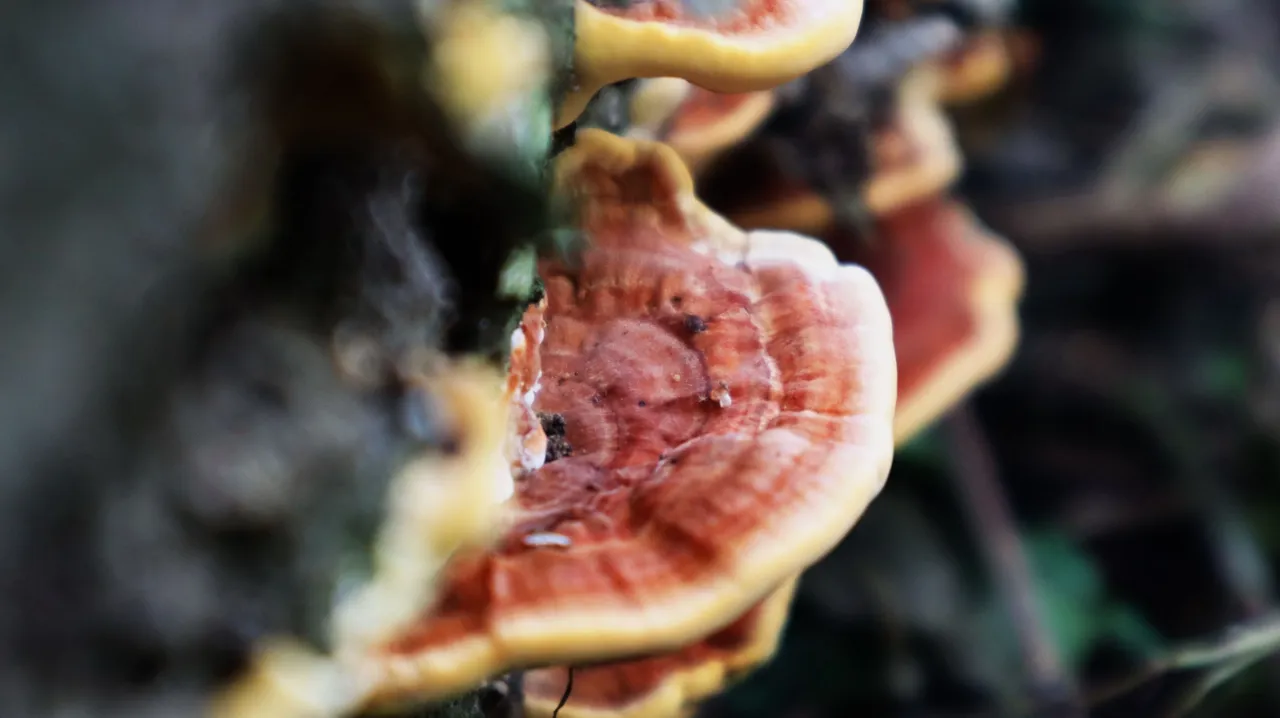
Although the readings that I refer to, do not mention the findings of Ganoderma sessile and others in my area or region in Sumatra, Indonesia, but I am quite happy to have been able to add some knowledge about Ganoderma mushrooms because I have found them, the mushrooms that makes me imagine the delicious cheese, on dead wood in a garden area in my village.
